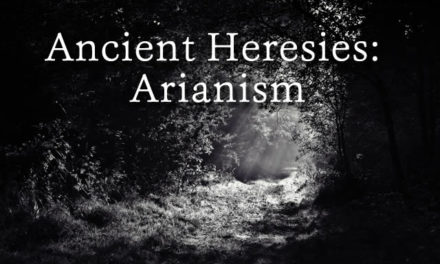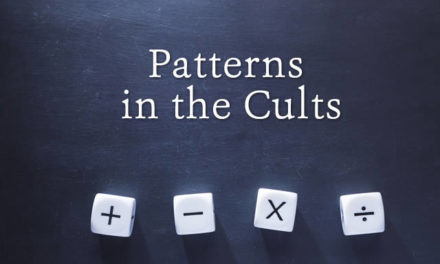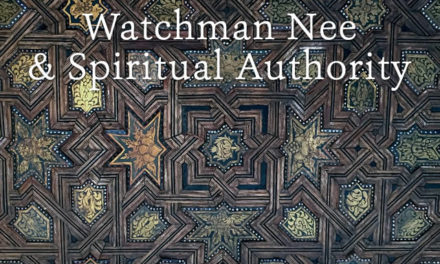Anyone who has ever had a conversation with a Jehovah’s Witness on the subject of the soul, death, or hell, knows that they believe in annihilation after death, the complete cessation of one’s existence.
A Christian will speak of going to be with Christ after death, or that an unbeliever will go to hell.
The Witness will counter with stock arguments that usually begin with Ezekiel 18:4. “…the soul that sinneth, it shall die,” and Ecclesiastes 9:5, “…the dead know not anything….” The use of these texts to prove annihilation demonstrates a misunderstanding of the definitions of biblical terms relating to the subject.
It will help us immensely in our conversations with Jehovah’s Witnesses if we know what the Bible teaches from the earliest mention to the final chapter. That must include knowledge of the terms involved as well as the ‘eschatology of death’.
The Old Testament: Sheol and Kever
Dr. Robert Morey said in his book Death and The Afterlife, “The KJV translates Sheol as ‘hell’ 31 times, ‘grave’ 31 times, and ‘pit’ three times. Because of this inconsistency of translation such groups as the Adventists, Armstrongites, and the Jehovah’s Witnesses have taught that Sheol means the grave” (pages 74, 75).
It should be pointed out that at this point in time no human is in Hell. Unbelievers are in a place of torment but it is not called Hell. It is called Sheol, or Hades, but not Hell.
Biblical doctrine has been progressively revealed. What we learn about death and the afterlife in the Pentateuch is far less than what we learn in the Gospels. What is first mentioned in Genesis is foundational. It is just the beginning of the story. More of the details come later in the Bible so that we have our most complete understanding in the New Testament. This is the way of all doctrinal knowledge.
From the times of the Patriarchs the expectation of continued existence after this life was a given. There is no evidence whatsoever, unless you capriciously re-define all the terms, for annihilation. Even the neighboring pagan religions universally believed in a conscious afterlife. If there had been a significant annihilationist view it seems that it would have been mentioned somewhere in the Old Testament.
One of the strongest evidences for a conscious afterlife comes from the terms used for the destiny of the body and the soul at death. These terms reveal that the body goes to one place and the soul, or spirit, goes to another. In these two places the two elements of man await the resurrection. In one place the body decomposes and in the other the soul/spirit consciously await the resurrection. If annihilation were the biblical teaching there should be no difference between the two.
No Souls in Kever
The Jehovah’s Witness will say that the destiny of a person at death is the grave. This, they say, is Hell. However, the term for the grave in Hebrew is ‘kever’ and is only used in reference to the body, and never in relation to the soul or spirit. The grave, the repository of the body, is never associated with Hell.
No Body in Sheol
Conversely the term for the destiny of the spiritual part of man at death is ‘Sheol’. This term is never used as a destiny of the body. For instance, no one has ever touched a Sheol whereas many have touched a grave. If no person has ever touched Sheol then how can it be said to be the grave? A gravedigger has never dug a Sheol, only a Kever.
Sheol is also the place to which everyone went at death, believers as well as unbelievers. Unbelievers went to “the lowest part of Sheol” (Deuteronomy 32.22). Believers, on the other hand, went to a higher level of Sheol. In Genesis 37.35 Jacob upon hearing of Joseph’s death looks forward to seeing him again in Sheol. Since there was no expectation of God’s judgment then Sheol held no terrors for him.
The New Testament: Hades and Mneema
In the New Testament we have almost identical concepts but with a different language, Greek. Hades is the Greek equivalent of Sheol. This is clearly demonstrated by the Septuagint, the Greek translation of the Old Testament, where Sheol is rendered in the Greek by the word Hades. Also, the Hebrew word ‘Kever’ has its Greek equivalent in ‘Mneema’.
No Body in Hades
The same things that are said about Sheol can be said about Hades. No one is physically able to touch Hades as if it were a grave. No dead body is ever placed in Hades. Only the spiritual part of man, the disembodied spirit, can go there. Again, Dr. Morey said, “Princeton theologian A.A. Hodge, stated: ‘Modern Hebrew and Greek scholars… unite with near unanimity in maintaining that these words (Sheol and Hades) never on a single occasion in the Bible mean either ‘hell’ or ‘the grave,’ but always and only the invisible spirit world” (Ibid. page 82).
The Rich Man and Lazarus
We see a very clear description of this place in Luke 16:19-31 with the story of the rich man and Lazarus. The rich man was in torment while Lazarus was being comforted in Abraham’s bosom, or what Sheol was also called by Old Testament believers. Between them was a gulf that neither could cross. Jehovah’s Witnesses may try to weaken the message by saying this is a parable. So ask them for their interpretation and be ready for something out of left field. In all of the other parables of Jesus the meaning is either very clear, or provided. The provided explanations also bear a very strong resemblance to the parable. Nothing is terribly mysterious or bizarre.
In the Old Testament believers were putting their faith in a coming Messiah. Today we put our faith in Christ who came. For us His atonement is a past event. The Old Testament saints could not go immediately into the presence of God because the atonement for their sins had not yet been paid. Abraham’s bosom, or the higher part of Sheol, was a place of comfort for them while they waited for their Redeemer.
Since Calvary there is a fundamental difference between Sheol and Hades. That difference is that Christians do not go there at death. They go immediately into the Presence of God (Philippians 1:23 and 2 Corinthians 5:6-8) because the atonement has been made and the blood of Christ covers their sin. Also, the saints from the Old Testament are also now in heaven, their sins being covered by the blood of Christ.
In Ephesians 4:8,9 Jesus is described by Paul as descending into “the lower parts of the earth,” (see also Acts 2:31) an Old Testament description of Sheol. He went to Sheol/Hades to reveal Himself as the Messiah the saints looked forward to in faith and then He “took captivity captive” by taking them with Him to Heaven. The language used here is a description of what Roman conquerors did in those times.
Some Word Faith teachers say that Jesus suffered the torments of Hell during the three days His body was in the tomb but that totally misunderstands the concept taught in the Bible.
No Soul in Mneema
If Hell is the grave why do we find no example in the New Testament of the soul, or spirit, going to the grave, or mneema? The spiritual part of man goes to a spiritual dimension, Hades for the unbeliever and Heaven for the Christian, whereas the body goes to the grave, tomb, sepulcher, or under the ground. In the New Testament this is the same destiny for everyone, believer or unbeliever.
The Lake of Fire
Gehenna is the term for the final place of punishment for the Devil, his angels, and unbelievers. It is derived from the name of the place where Jerusalem’s garbage was burned, the Valley of Hinnom. This is the place we commonly call Hell. It will be God’s everlasting garbage dump.
Conclusion
The final events in the ‘eschatology of death’ are described in Revelation 20. A key passage is verses 13 and 14. It says, “And the sea gave up the dead which were in it; and death and hell (hades) delivered up the dead which were in them: and they were judged every man according to his works. And death and hell (hades) were cast into the lake of fire. This is the second death.”
Hades, the place where all unbelievers from the past reside, will be emptied. Those unbelievers will be brought before the Great White Throne where they will be judged. They will then be sent to the Lake of Fire which will also be the residence of Satan and his demons. This will be their state for eternity.
As an analogy Sheol/Hades is like a county jail where the accused is held before and during trial. However, when sentence is passed the prisoner is transferred to the State Penitentiary to serve out his sentence.
Believers on the other hand will receive a glorified physical body at the resurrection. They will appear before the Judgment Seat of Christ where their reward will be given. They and will then reside for all eternity with Christ.
By David Henke






